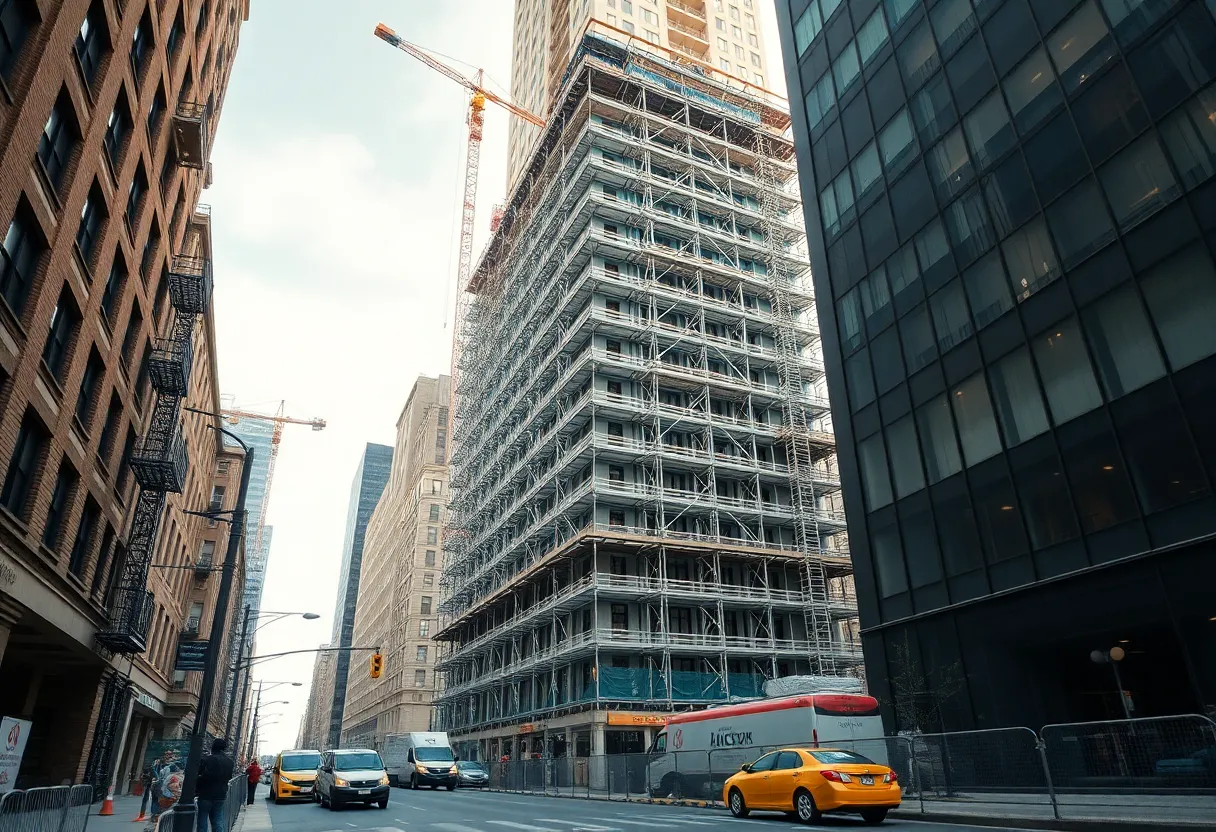Cincinnati, August 17, 2025
News Summary
CIG Communities secured a $56.4 million construction loan to convert a 27-story former office tower at 36 E. Seventh St. into Avant, a 162-unit apartment community. Construction is already underway on the landmark downtown site as part of a regional push to repurpose idle office stock and address housing shortages. The project joins several other major adaptive-reuse efforts in Cincinnati that combine private loans and public incentives to bridge retrofit costs. Developers expect units to hit the market next year, with conversions helping to reactivate downtown cores while navigating structural, zoning and mechanical challenges.
Construction Loan Secured for $56.4M Downtown Conversion; Office‑to‑residential projects gain steam across U.S. cities
What happened: A local developer has secured a construction loan to convert a 27‑story downtown office tower into apartments. The loan backs a $56.4 million redevelopment that already has crews on site and is expected to put new rental units on the market next year.
Project details — Avant at 36 E. Seventh St.
The project converts the former URS office building at 36 E. Seventh St. into a 162‑unit apartment community called Avant. The developer purchased the office portion of the building in 2024 and describes the work as part of a broader effort to revitalize downtown. Construction has begun and the first units are slated to be marketed next year.
Why this matters now
Cities face two linked trends: rising office vacancy and persistent housing shortages in dense neighborhoods. Converting underused office stock into homes is being pursued as a practical, though complex, way to meet housing needs and reuse existing buildings. The work often depends on financing tools, tax credits and local policy support to be feasible.
Other notable conversions moving ahead
Examples across the country show a wide range of scale, financing and design approaches:
- LaSalle Residences (Chicago): A landmark historic tower is being repurposed to create 226 apartments on upper floors of a 22‑story building. About one‑third of the new units are being set aside as affordable housing as part of a downtown revitalization initiative. New resident amenities and penthouse terraces are planned, and work is scheduled to finish in 2026.
- 7 West 7th (Cincinnati): A former department store headquarters reopened recently as a 341‑unit luxury apartment tower after a nearly decade‑long redevelopment that cost about $73 million. The project received public support through a property tax abatement and a large bond issuance that helped move financing forward. The new building offers a range of amenities and is pet‑friendly.
- Altitude on Main (Richmond, Va.): This conversion will turn a 1964 office tower of roughly 280,000 square feet into 302 apartments and about 8,500 square feet of street‑level retail. Developers are using federal and state historic tax credits and a $68 million unitranche loan to support the work. The target opening is the second half of 2026.
- SoMA at 25 Water St. (New York): One of the largest office‑to‑residential conversions in recent U.S. history, this project created 1,320 apartments from an old office tower through a multi‑year, high‑cost renovation that included an overbuild and major facade changes. The project used specialized tax tools and added a wide array of amenities while including a sizable share of affordable units.
Local pipeline and incentives
The Cincinnati area is seeing a steady pipeline of adaptive reuse work. Reports show the metro could gain roughly 1,753 new apartments from office conversions this year, and nearly 20% of local office inventory is identified as suitable for transformation. Other projects in progress include a major redevelopment of an iconic downtown tower expected to add roughly 385 apartments and a large mixed‑use conversion that will bring both housing and street‑level commercial space back to life.
Developers rely on a mix of tools: construction loans, unitranche financing, historic tax credits, tax increment financing (TIF) abatements, public bond support and long‑term property tax exemptions. These incentives can be key to covering the extra costs of adapting older buildings—such as installing modern electrical, HVAC and plumbing systems—while still offering rental housing at market or mixed income levels.
Practical challenges and design responses
Each building presents a different set of technical and design hurdles. Some historic buildings can be fitted with modern systems without major structural changes, while others require deeper intervention—like adding floors, reworking facades or redesigning floor plates to create daylight and livable unit layouts. Developers and architects are experimenting with amenities, unit mixes and financing structures to make these conversions work financially and to meet local housing goals.
Takeaway
The new construction loan for the Avant conversion at 36 E. Seventh St. is part of a larger trend: cities are increasingly supporting adaptive reuse of underused office buildings to add housing. Projects vary widely but commonly use a mix of public incentives and private financing to handle higher conversion costs. With construction underway on several fronts, more converted apartments are expected to reach the market soon, bringing more residents and activity back to downtown cores.
Frequently Asked Questions
How many apartments will Avant add downtown?
Avant will provide 162 rental apartments in the converted 27‑story tower at 36 E. Seventh St.
How much is the construction loan for the Avant conversion?
The construction financing for Avant covers a project cost of about $56.4 million.
When will Avant units be available?
Construction is already underway and units are expected to be marketed starting next year.
What kinds of incentives help make conversions possible?
Common tools include construction loans, unitranche loans, historic tax credits, TIF abatements, public bond issuances and long‑term property tax exemptions.
Are conversions affordable housing generators?
Some projects include affordable units or are required to set aside a share of units as affordable through local programs. The share varies by project and location.
Do conversions change downtown life?
Adding residents to previously office‑only buildings tends to increase foot traffic, support retail on ground floors and contribute to overall downtown revitalization.
Key features at a glance
| Project | Location | Units | Cost / Financing | Notes |
|---|---|---|---|---|
| Avant | 36 E. Seventh St. | 162 | $56.4M construction loan | Conversion of 27‑story former office tower; units marketed next year |
| LaSalle Residences | Chicago | 226 | Historic tax incentives; mixed financing | About one‑third affordable; completion targeted 2026 |
| 7 West 7th | Cincinnati | 341 | $73M redevelopment; TIF abatement; bond support | Luxury tower with rooftop and coworking amenities |
| Altitude on Main | Richmond, Va. | 302 | $68M unitranche loan; historic tax credits | Includes ground‑floor retail; opening mid‑2026 |
| SoMA (25 Water St.) | Manhattan | 1,320 | $787M renovation | Large overbuild and amenity set; about 25% affordable |
Deeper Dive: News & Info About This Topic
Additional Resources
- Multihousing News: Beyond 9 to 5 — How office conversions are reviving downtowns
- Wikipedia: Adaptive reuse
- Local12: Hooper Building conversion underway
- Google Search: Hooper Building Cincinnati conversion
- The Cincinnati Enquirer: Cincinnati’s old offices, warehouses converting to apartments
- Google Scholar: office to residential conversions Cincinnati
- WCPO: $162M Carew Tower conversion moves forward
- Encyclopedia Britannica: adaptive reuse
- Multihousing News: Where are office-to-resi conversions growing most — and why?
- Google News: office to apartment conversions Cincinnati
Author: Construction CA News
The CALIFORNIA STAFF WRITER represents the experienced team at constructioncanews.com, your go-to source for actionable local news and information in California and beyond. Specializing in "news you can use," we cover essential topics like product reviews for personal and business needs, local business directories, politics, real estate trends, neighborhood insights, and state news affecting the area—with deep expertise drawn from years of dedicated reporting and strong community input, including local press releases and business updates. We deliver top reporting on high-value events such as the Rose Parade, Coachella, Comic-Con, and the California State Fair. Our coverage extends to key organizations like the California Building Industry Association and Associated General Contractors of California, plus leading businesses in technology and entertainment that power the local economy such as Apple and Alphabet. As part of the broader network, including constructionnynews.com, constructiontxnews.com, and constructionflnews.com, we provide comprehensive, credible insights into the dynamic landscape across multiple states.




